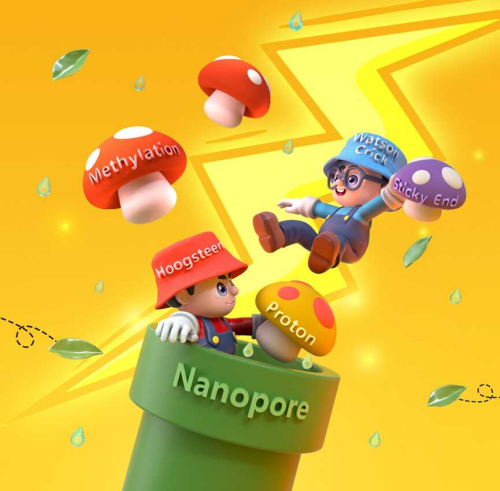

Watson-Crick hydrogen bonds and Hoogsteen hydrogen bonds are recognized to aid the formation of higher-order structures in genomic DNA which govern dynamically the genetic modes such as gene regulation and replication. Hence, the precise measurement and distinguishment of the two hydrogen bonds in different DNA contexts is essential to well understand DNA architectures. However, due to the transient nature and minimal structure difference in sub-nanometer scale, differentiating Watson-Crick bonds from Hoogsteen bonds is still hard to yield.
Recently, scientists in Chongqing Institute of Green and Intelligent Technology, Chinese Academy of Sciences (CIGIT, CAS) discriminated the two hydrogen bonds in multiple DNA contexts using an alpha-Hemolysin nanopore. alpha-Hemolysin is a sensitive nanopore to produce single base-level detecting resolution that is ideally suited to discriminate chemical bond variants at the nanoscale. This study achieved the discrimination relying on nanopore measurement on the two hydrogen bonds including measurements in response to physicochemical roles changes such as epigenetic modification, DNA structure variants and proton strength in the environment, which remain elusive but matters in stabilizing DNA hydrogen bonds. The results not only discriminated Watson-Crick and Hoogsteen bonds in multiple DNA contexts, but also indicated that Watson-Crick and Hoogsteen bonds show different susceptibility with physicochemical parameters changes by the nanopore measurement. This work provides insight into the features of hydrogen bonds at the nanoscale, should benefit profiling complex DNA architectures by examining minor structural changes.
The work entitled “Nanopore Discriminates Watson-Crick and Hoogsteen Hydrogen Bonds in Multiple DNA Contexts” is accepted for publication in Nano letters. Dr. Wei Li is the first-author (PhD of CIGIT, Postdoc of Sichuan Academy of Medical Sciences and Sichuan Provincial People's Hospital, University of Electronic Science and Technology of China), Dr. Yunjiao Wang (CIGIT, CAS) and Dr. Liang Wang (CIGIT, CAS) are corresponding authors. This work was supported by the National Key Research and Development Program of China, China Postdoctoral Science Foundation, Chongqing Talents-Exceptional Young Talents Project, The Youth Innovation Promotion Association of Chinese Academy of Sciences (2022388) and Natural Science Foundation of Chongqing (CSTB2023NSCQ-MSX0071).
论文链接 https://doi.org/10.1021/acs.nanolett.4c06067

Figure. Nanopore Discriminates Watson-Crick and Hoogsteen Hydrogen Bonds in Multiple DNA Contexts